If you’re on the hunt for the best DDR5 RAM to pair with your shiny new Intel 12th Gen system, you’ve come to the right place. We’ve tested many DDR5 memory kits over the last few months ourselves and we’ve picked out the top kits, at different price points, to suit systems at any price point.
Back when DDR5 made its debut, it was expensive and very difficult—if not impossible—to find in many markets. That’s all changed now, and while DDR5 remains expensive compared to DDR4, it’s nice to see a PC component trending downwards in price, instead of up. If you are after DDR4 or weighing up your options, we have a guide to the best DDR4 RAM kits, too.
DDR5 speeds begin at 4800MHz and range up to 6400MHz with higher speeds to come in the future. While 2x8GB kits are available, you can consider 2x16GB to be a more appropriate baseline for a gaming system. That 32GB level is a good amount that will serve you well for some time to come.
In general, spending big money on RAM isn’t recommended unless you have a high-spec rig to use it with. As prices fall though, you may find dropping a few extra dollars is worth spending to look at, say, DDR5-5600 rather than DDR5-4800. Some games and applications will respond to the extra speeds while others won’t gain much, if anything at all.
Read on as we present a list of our favourite DDR5 memory kits. Our picks are based on our lab testing, with a dose of value for money and overclocking capability thrown in. Whatever your needs and budget, we’ve got a DDR5 kit to suit you.
Best DDR5 RAM for gaming
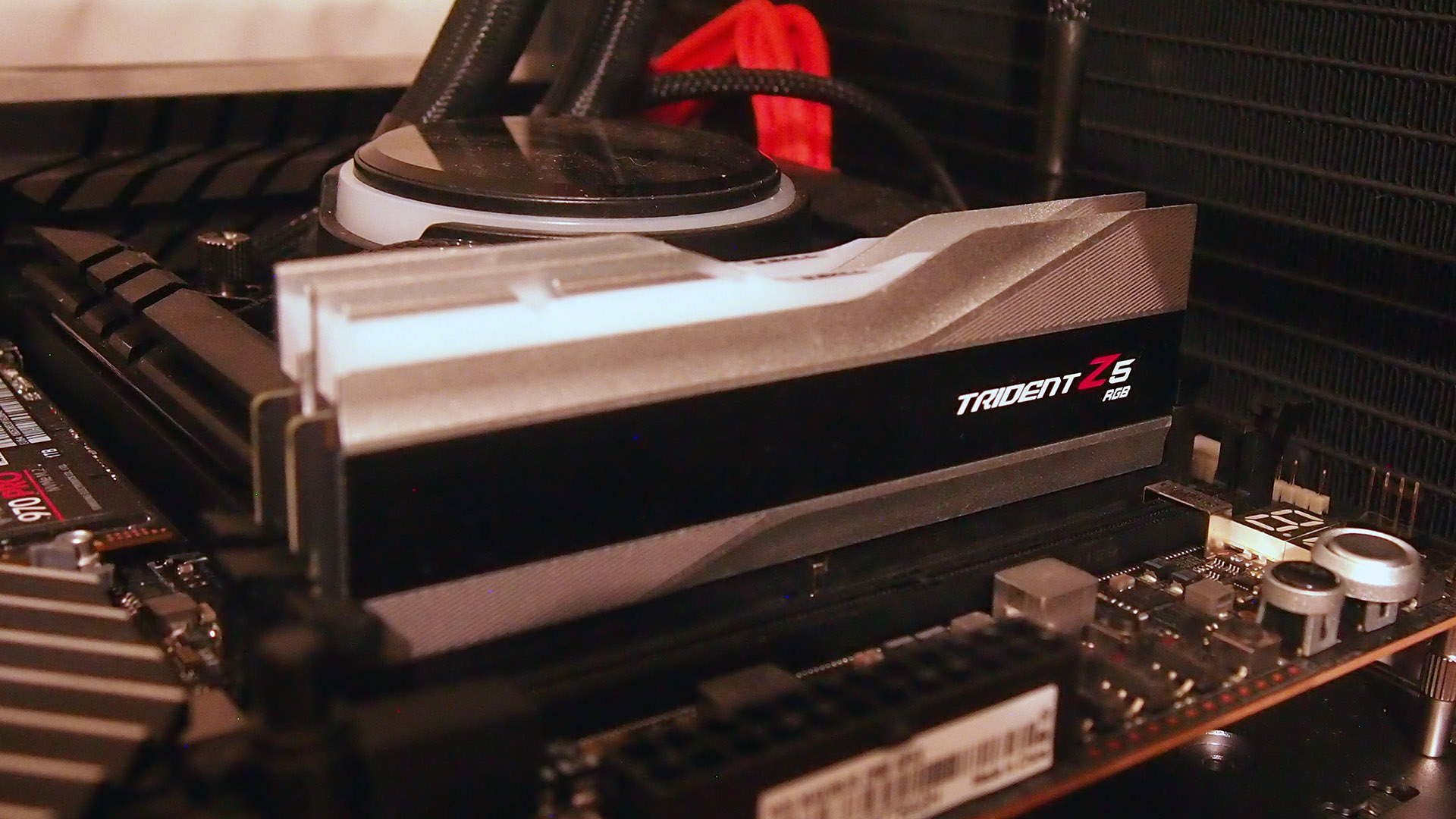
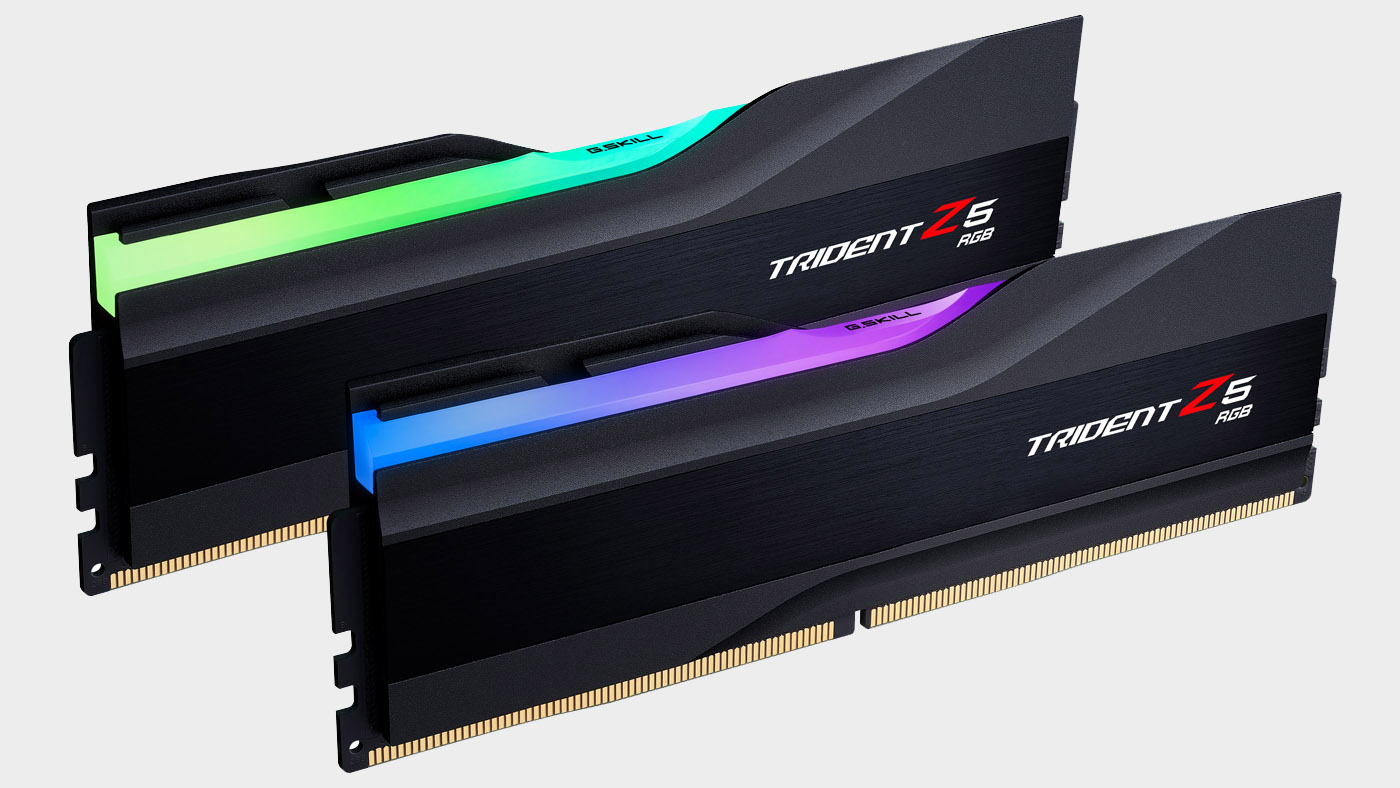
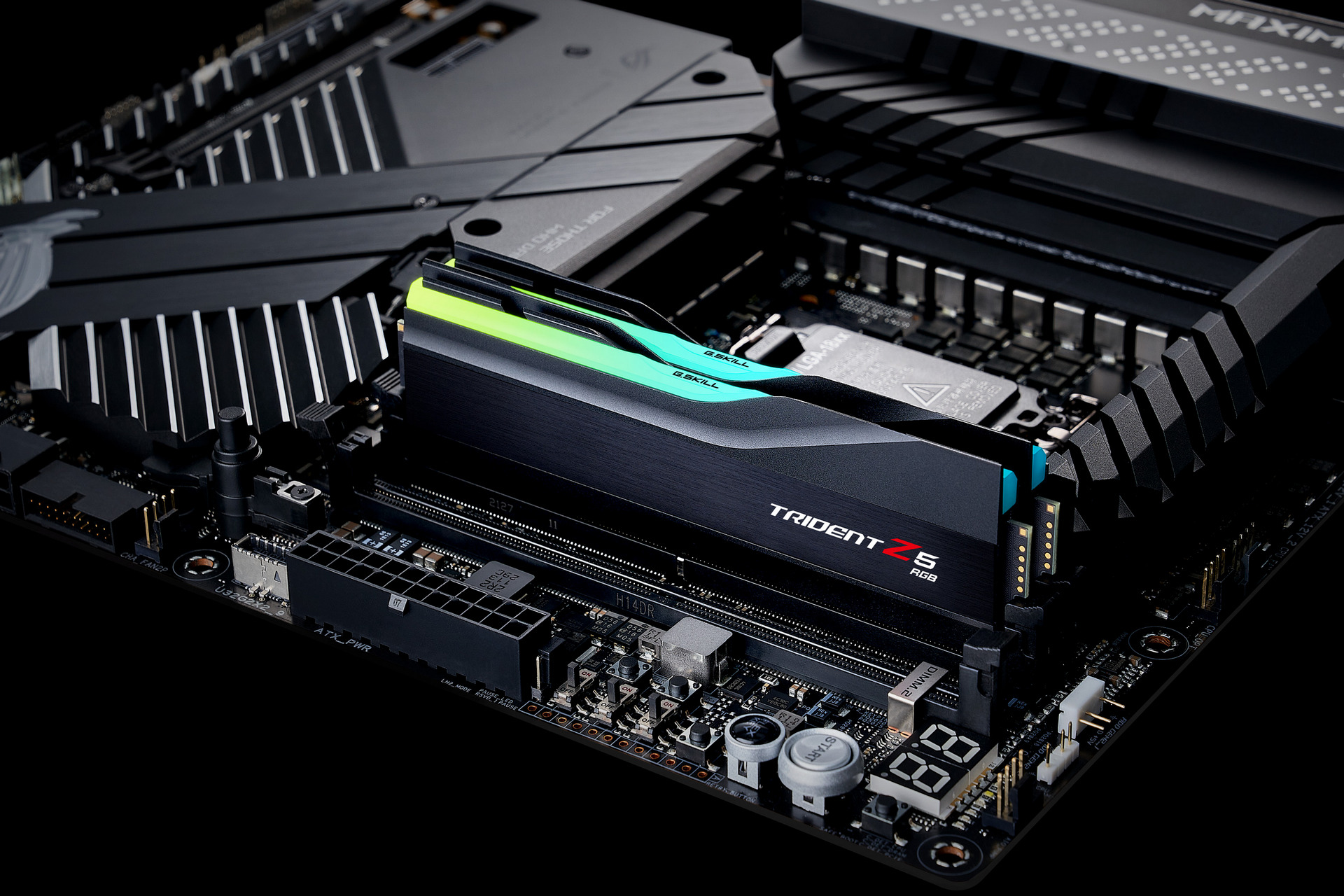
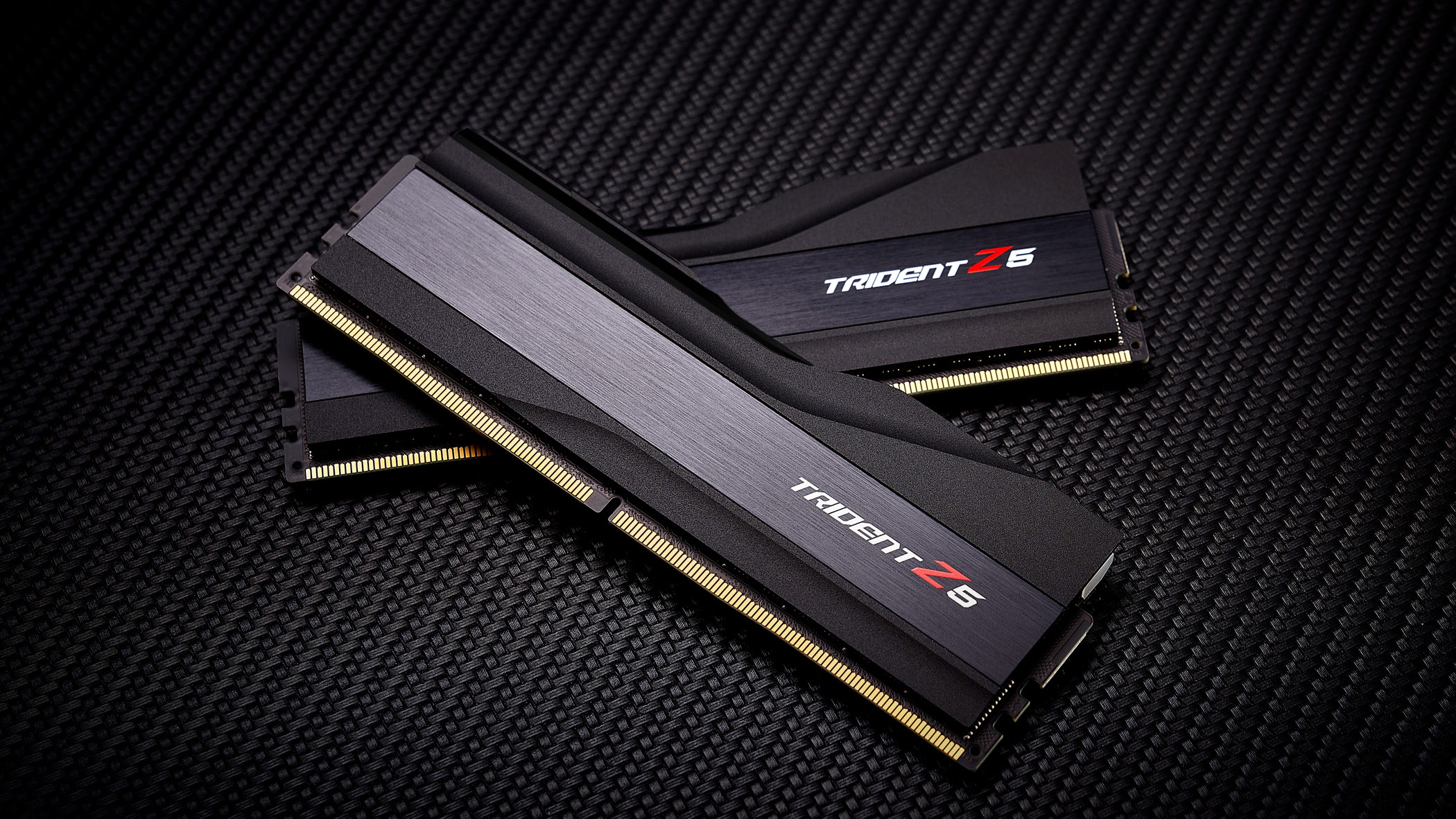
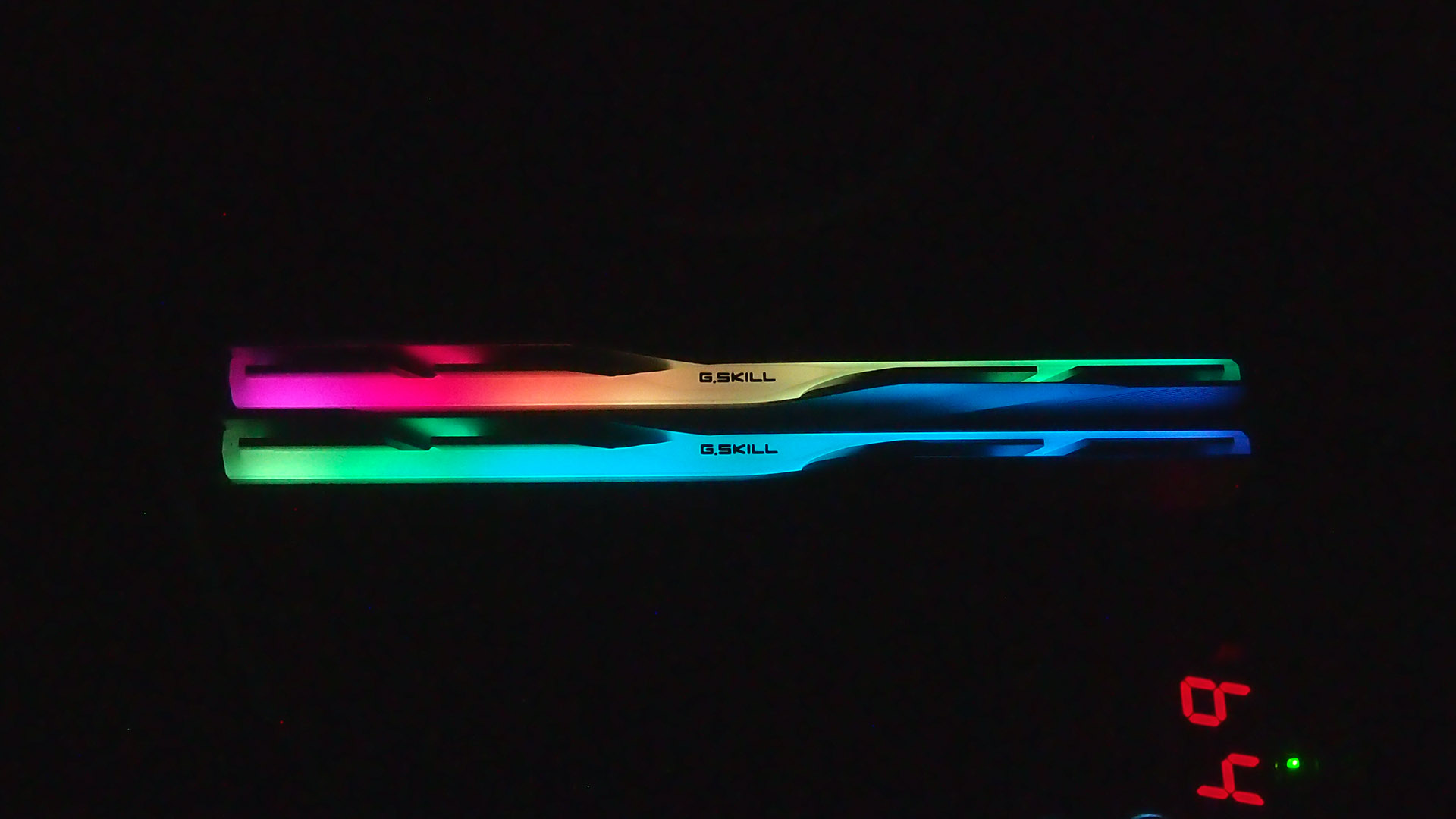
G.Skill rarely makes a misstep when it comes to high performance DDR5. The company consistently delivers fast kits that end up on the shortlists of gamers, enthusiasts, and us. This Trident Z5 DDR5-6000 with its 36-36-36 timings really hits the sweet spot for high frequency and tight timings.
The kit is available in both black and silver finishes. Its futuristic look and RGB implementation look fantastic with its lovely diffused light. Some eyeball-scalding individual LEDs can be a bit over the top, but not these.
The price of this kit has come down a long way from its steep launch price. In fact it doesn’t cost all that much more than a decent 5200MHz kit, and with its extra speed and tighter timings, it’s an easy recommendation. You get great performance, looks and, surprisingly, actually now value for money. It’s widely available too! What a world.
Read our G.Skill Trident Z5 RGB 2×16 GB DDR5-6000 C36 review
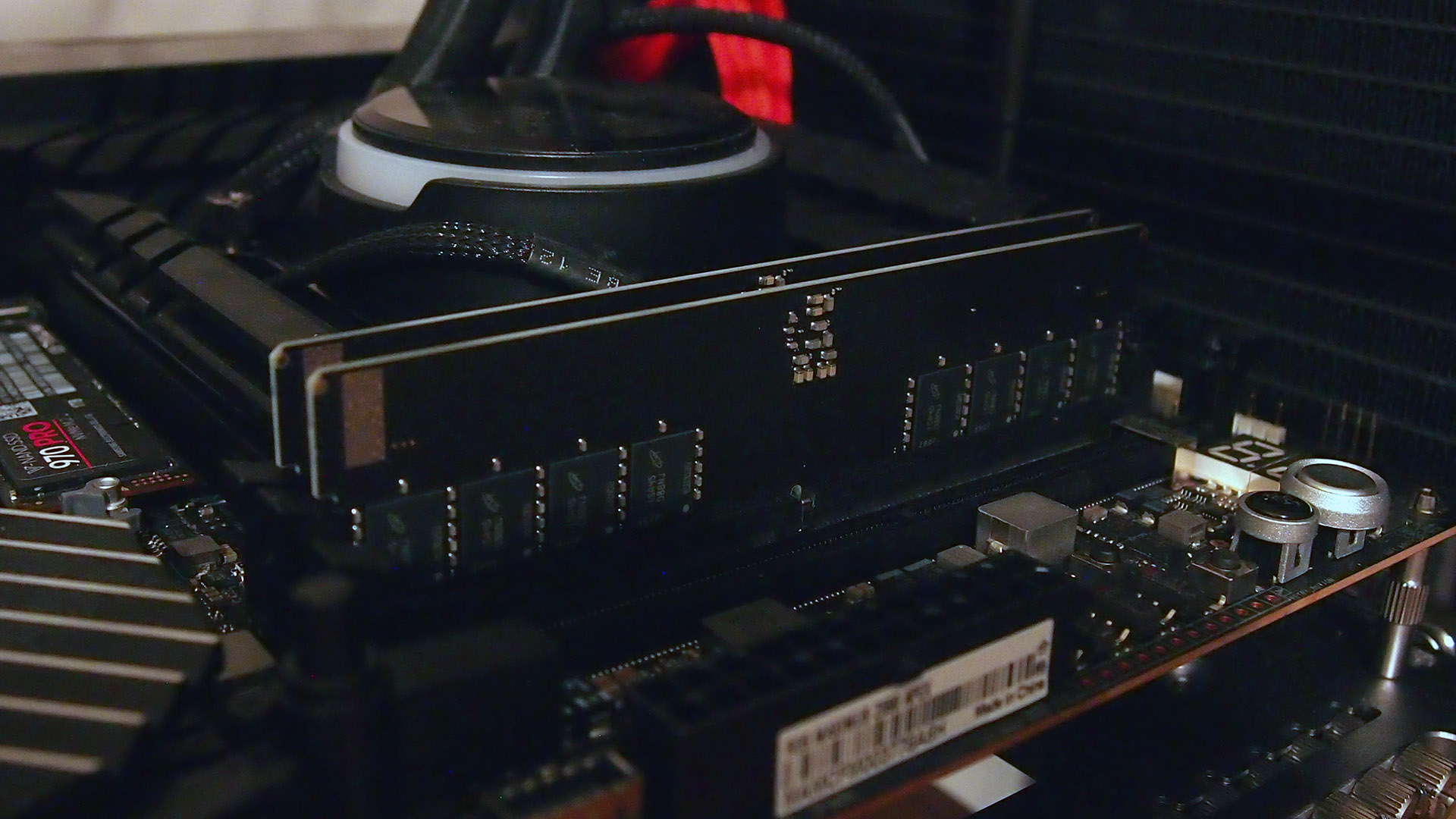

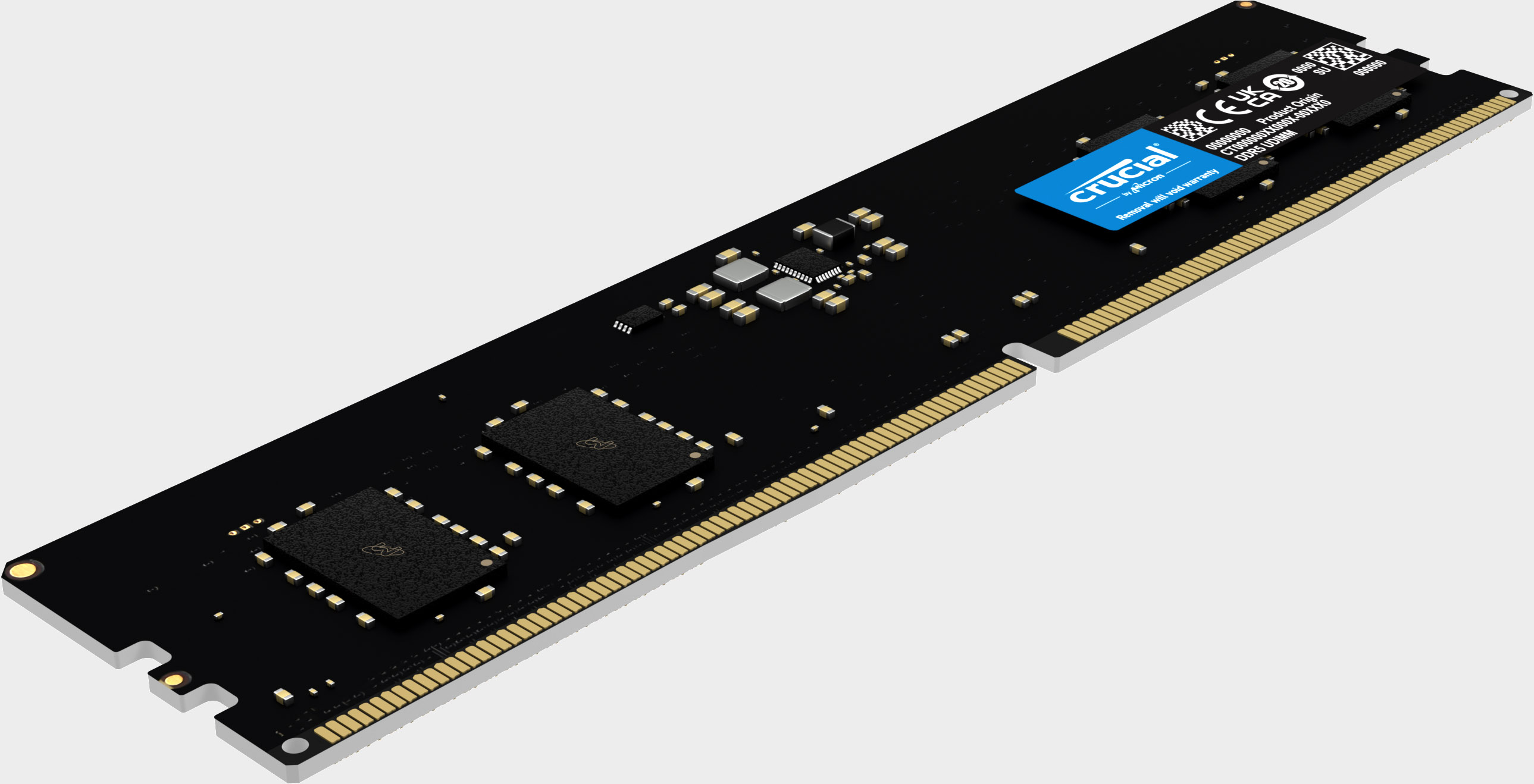
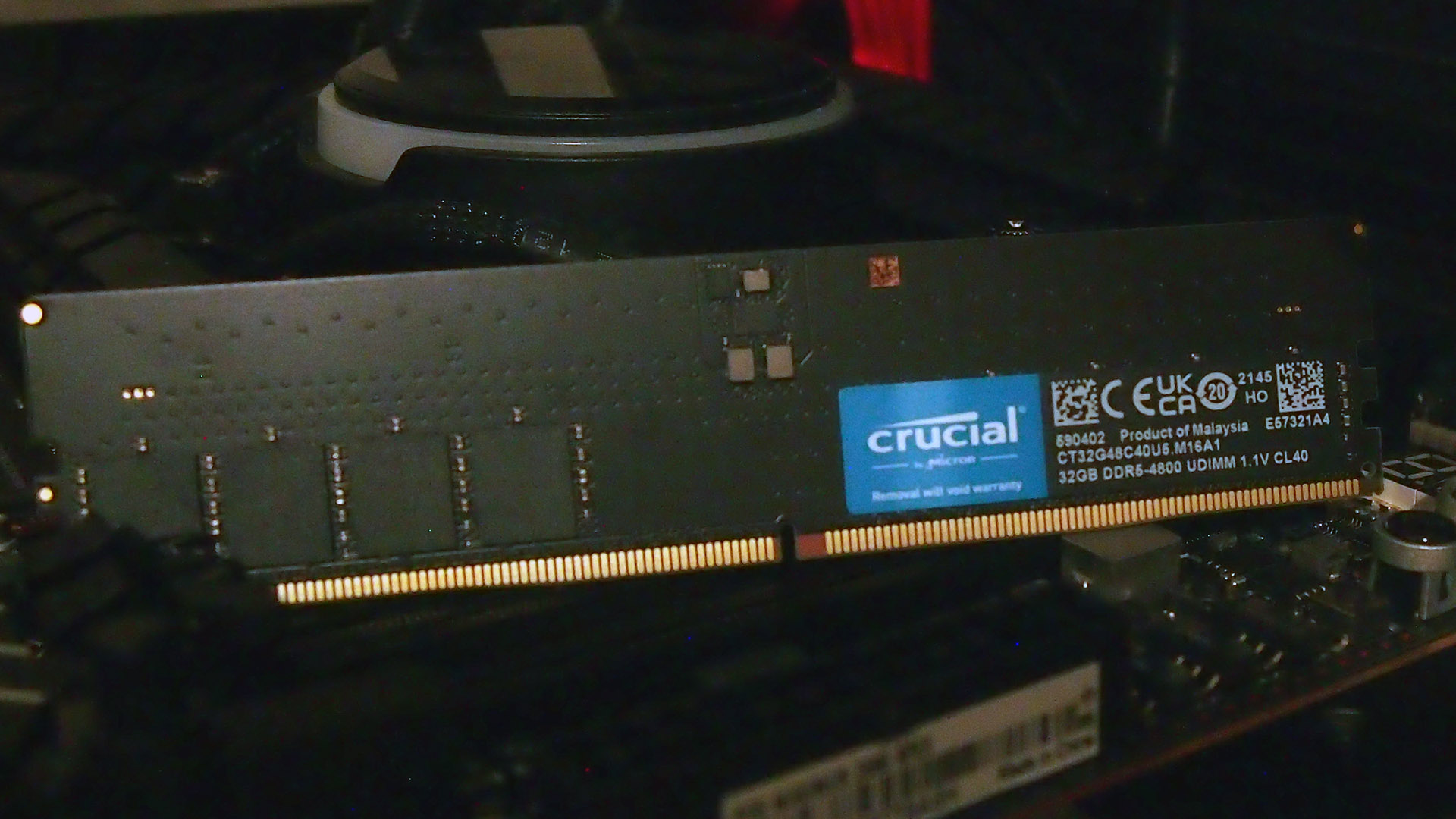
If you’re after 64GB of DDR5, your options are limited. The Alder Lake memory controller struggles with high density configurations, which is why there are very few 2x32GB kits available. The Crucial DDR5-4800 2x32GB kit is as generic as it gets, but if you need a lot of RAM for whatever task you want to throw at it, it’s a great choice.
During our testing, the Crucial kit threw up a few surprises, sometimes matching a 5200MHz kit thanks to its dual rank design. Add to that its low operating voltage and surprisingly good value for money, and it’s a good solid kit for work or play. It’s the kind of kit that will have a long life, too. In a few years from now, 64GB will still be more than useful.
The Crucial Ballistix name is no more and this bare PCB kit won’t win any beauty contests or set speed records, but as a set and forget kit for an alt-tabbing gamer or workstation user, it’s definitely worth a look.
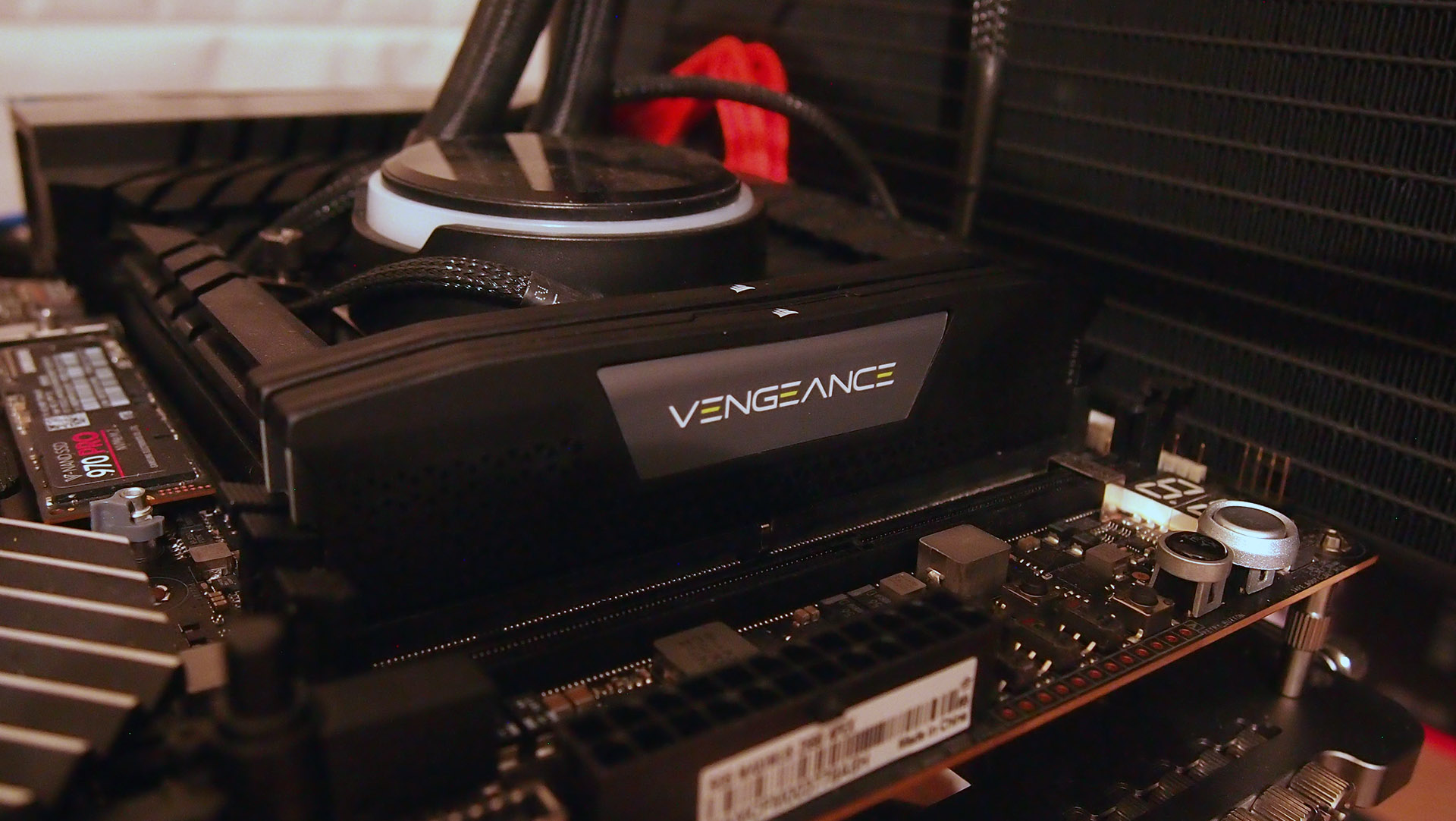
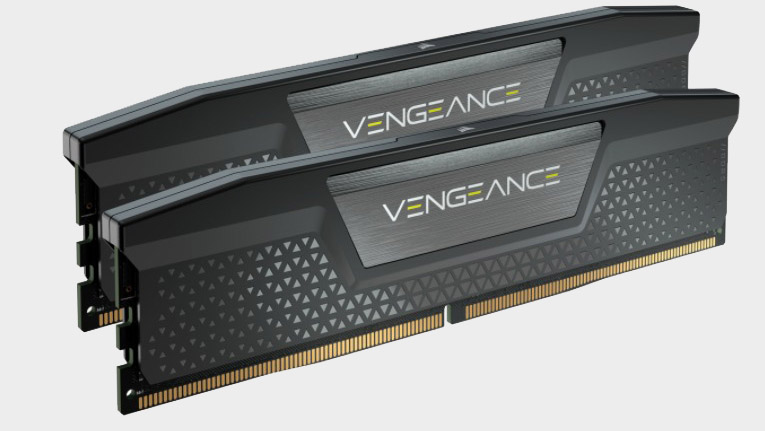
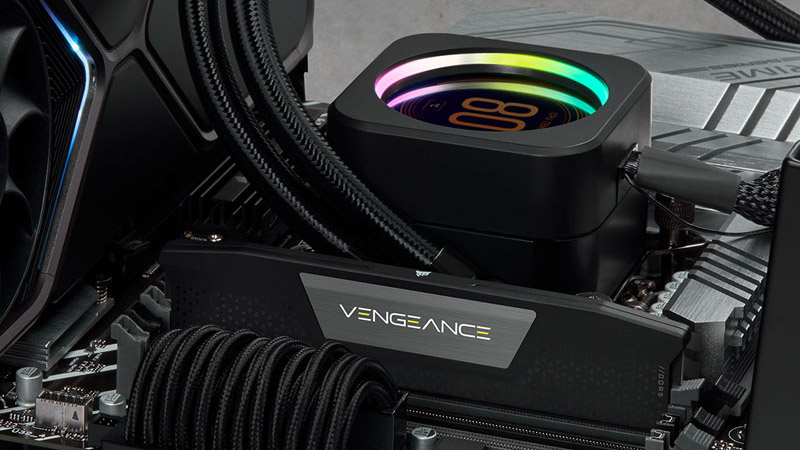
DDR5 memory is still expensive compared to DDR4, but that’s changing week by week. The Corsair Vengeance DDR5-4800 kit isn’t the fastest you’ll come across but it’s one of the best options for a budget DDR5 system right now.
At 4800MHz it’s not a speed demon by any means, though if you’re using it with something like an i5 processor and an older or mid range GPU, you’d be lucky to notice any difference outside of memory sensitive benchmarks. It’s not that much of an overclocking kit but if you don’t mind upping the voltage a bit, we’ve had it happily purring along at 5200MHz in testing, which adds a bit extra to its already excellent value.
It’s a perfect set and forget kit. At just 1.1V, it runs cool. It’s a great pairing for a B660 build and its low height means it’s a lot easier to use with large air coolers compared to many kits on the market.
If you’re on a tight budget and have decided to leave DDR4 behind, grabbing a kit like this instead of a higher speed kit and diverting the money to a better CPU or GPU will deliver really tangible benefits.
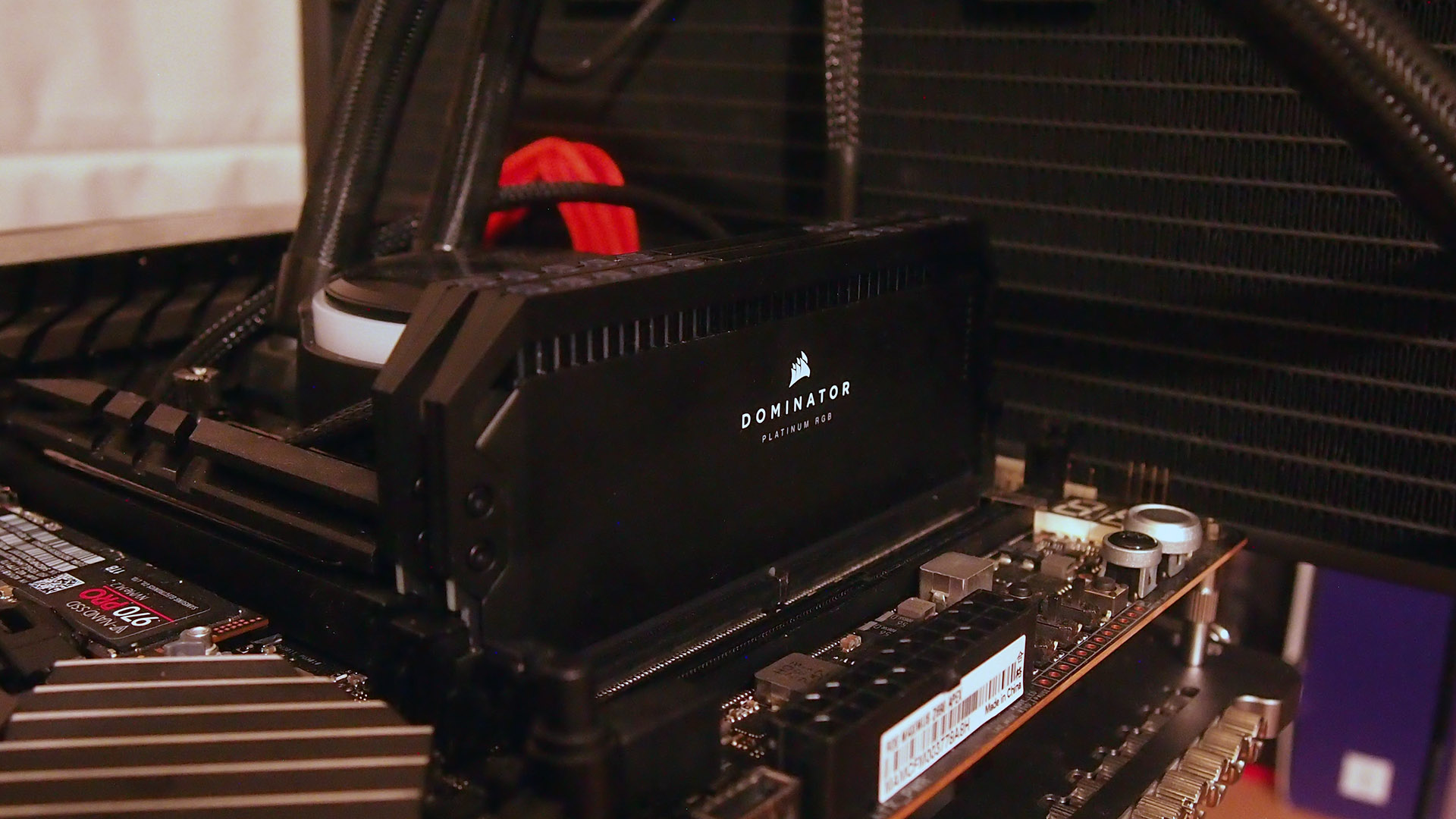
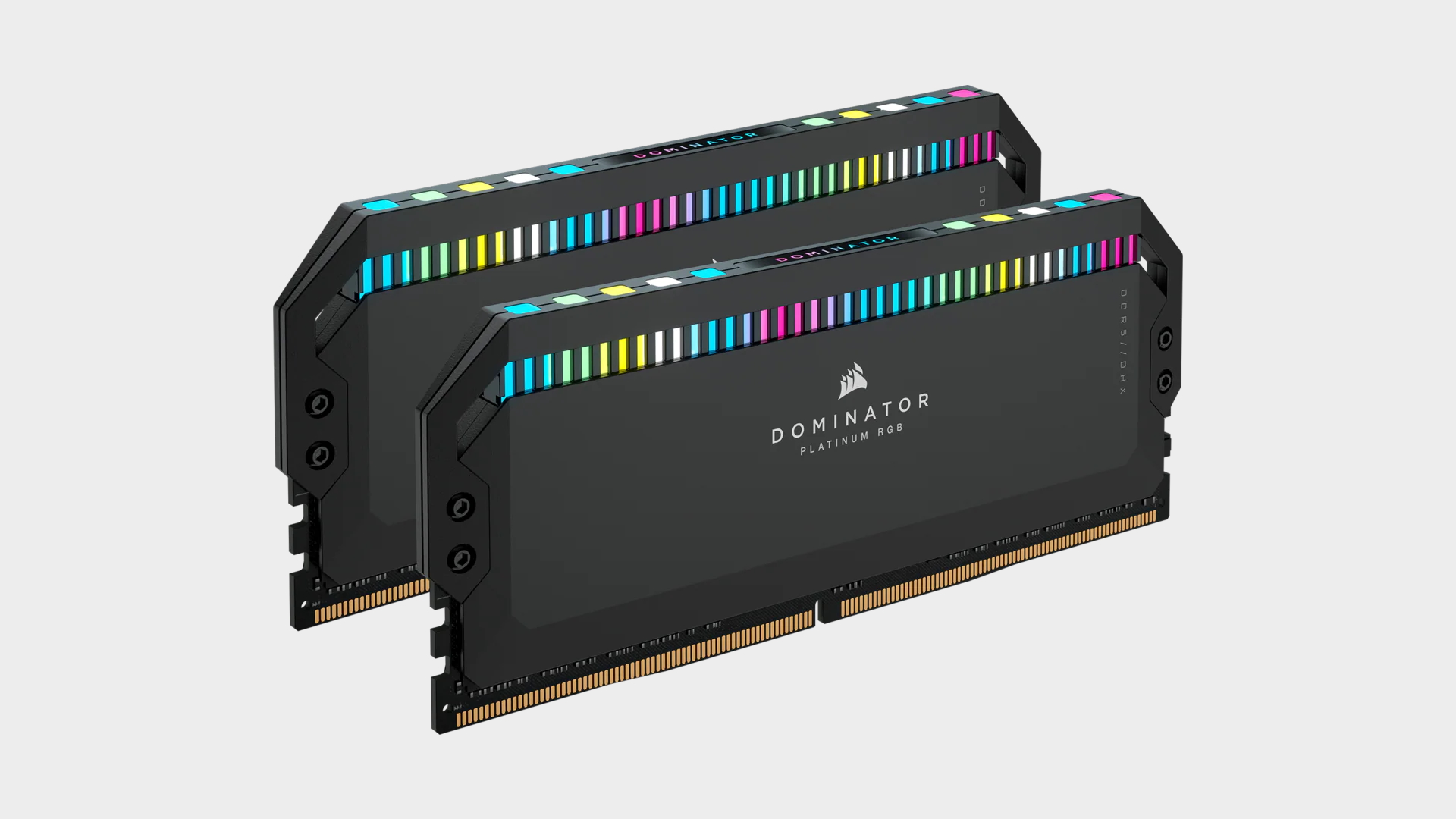
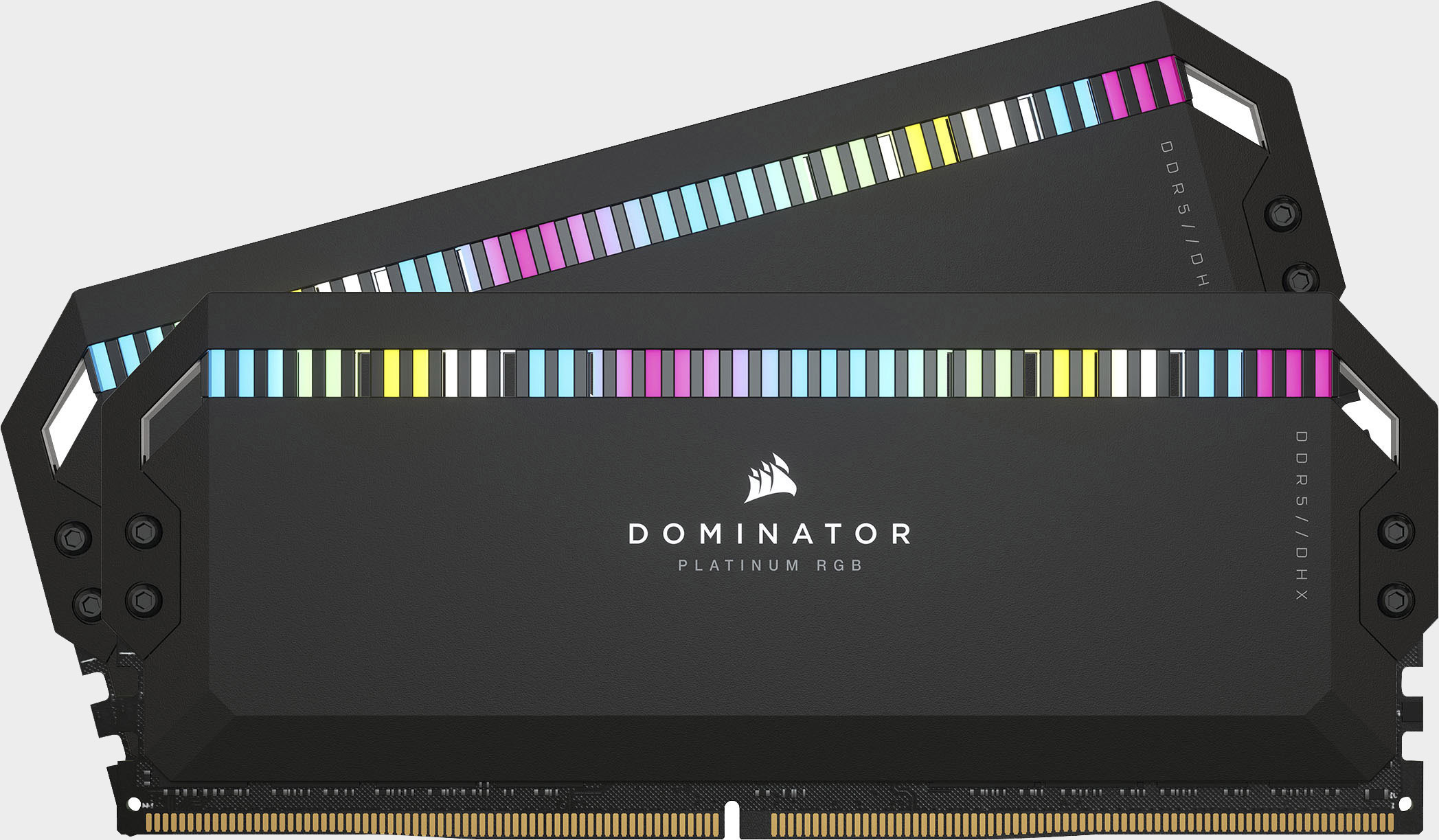
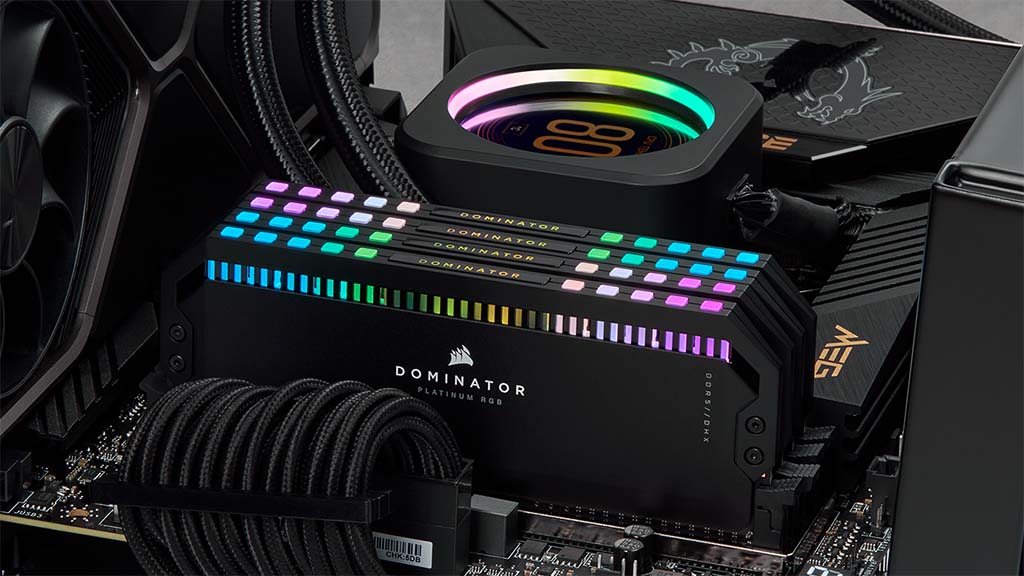
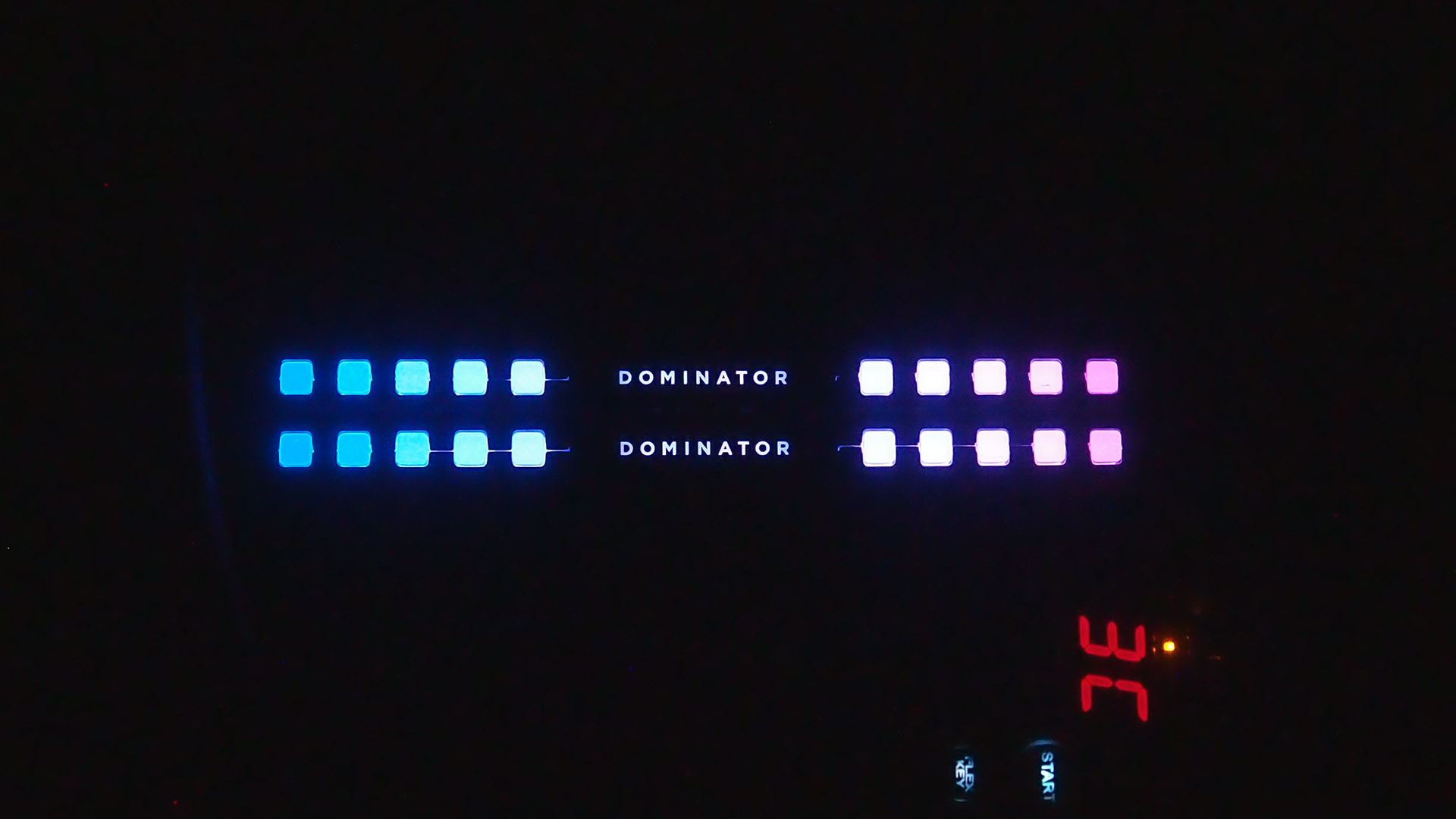
Corsair’s Dominator kits hardly need an introduction, and these Dominator Platinum RGB kits really do look fantastic. The black aluminium heat spreaders are weighty and solid. The sticks are very tall though so you’ll need to make sure your cooler won’t be impeded.
This kit runs at a speed of 5200MHz with 38-38-38-84 timings at a voltage of 1.25v. That’s a good sweet spot for a mainstream DDR5 system. Sure, it’s still expensive compared to DDR4 and it does carry a bit of a price premium over non-RGB 5200MHz kits but at this price, it offers a good level of performance.
As it’s a Corsair product, it’s ready to be integrated into a Corsair iCUE system. You can easily sync the memory’s RGB with a case, cooler or keyboard/mouse combo. If you’re an RGB lover, you’ll have loads of fun playing with all the colours and settings. You’ll struggle to find a better RGB kit at this price, though with prices on a downward trend, that can change quickly.
Read our Corsair Dominator Platinum RGB DDR5-5200 memory review
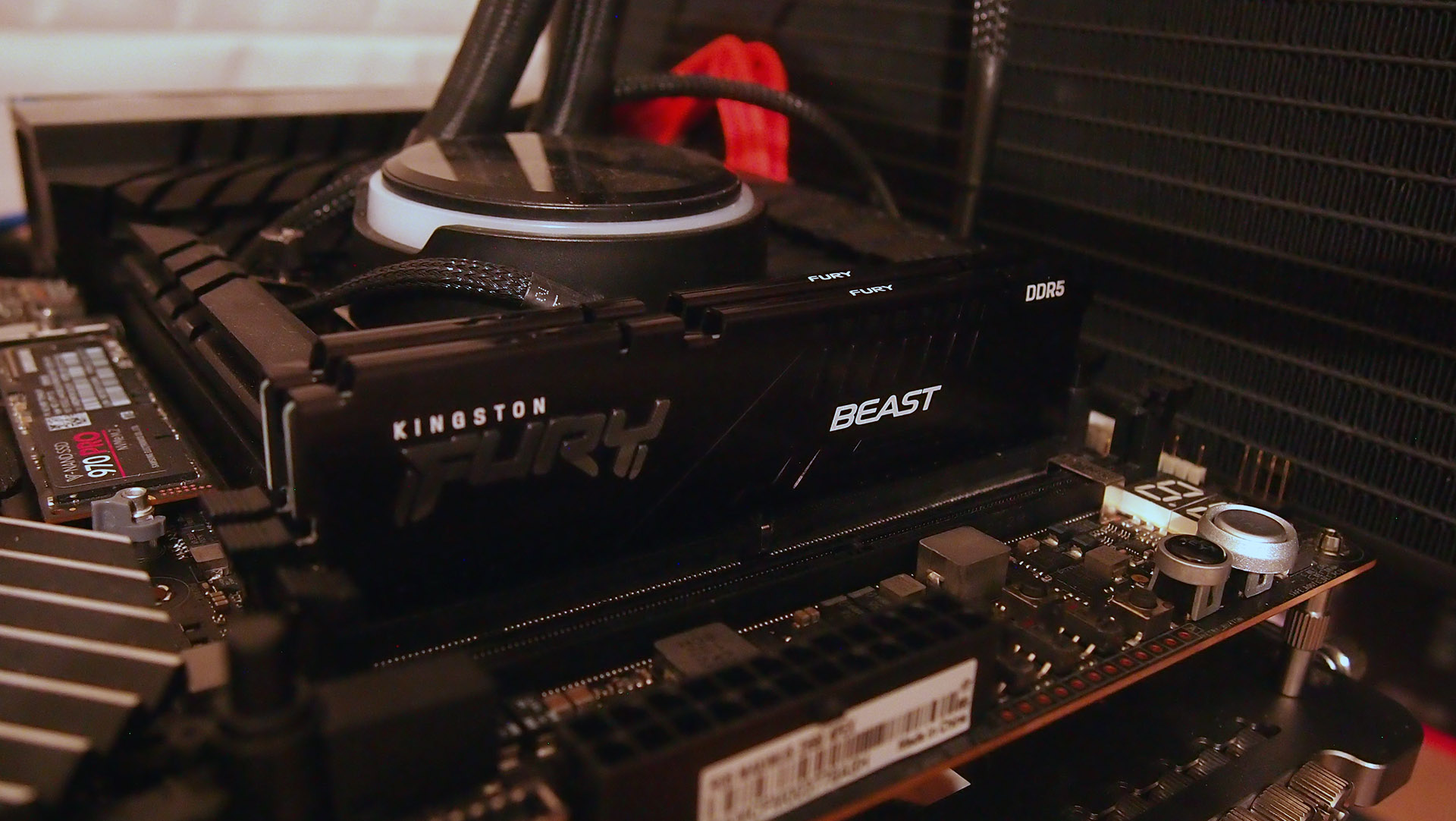
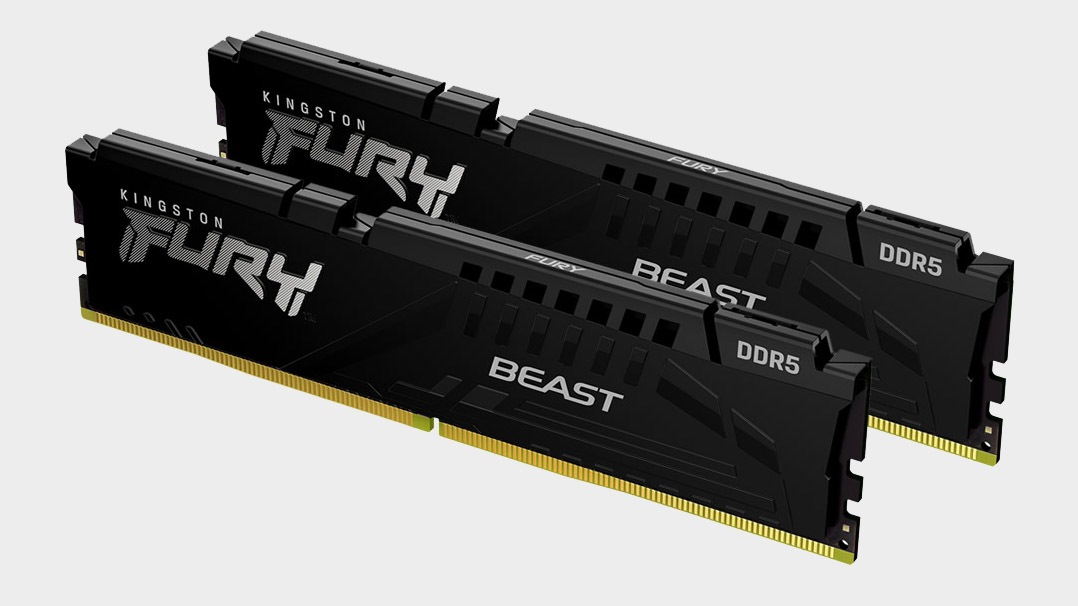
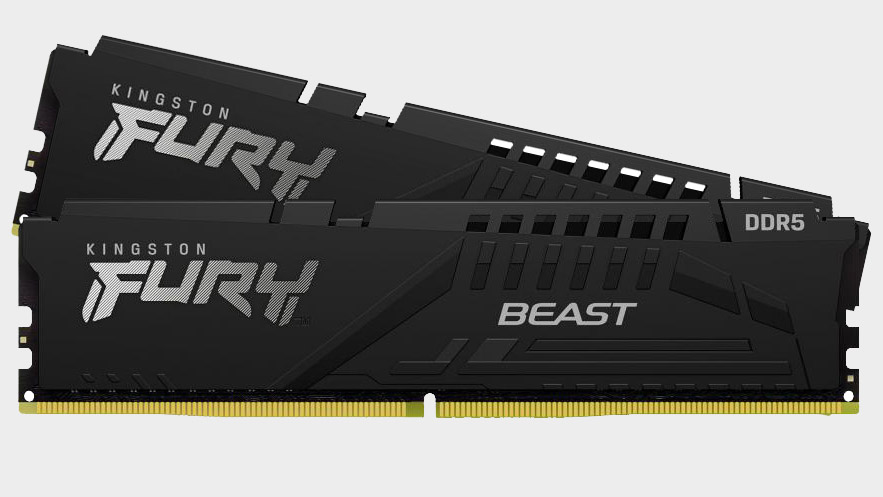
Kingston’s Fury Beast kit eschews flashy RGB and huge heat sinks in favour of a design that’s subtle and discrete. If your PC is sitting under a desk, out of sight and mind, do you really need a lot of bling?
The Fury Beast DDR5 memory modules have a black PCB with a low height aluminium heat spreader. It comes with SK Hynix ICs which means there should be some OC headroom on tap, however our sample wasn’t all that capable, with a stable 6400MHz being a struggle when we were testing it. That’s likely just our particular sample though.
The real strength of the Kingston Fury Beast kit is its value for money. At the time of writing it was one of the cheapest 2x16GB 6000MHz kits on the market. If you care about performance and less about bling, this is a DDR5 kit that’s well worth a look.
Best CPU for gaming | Best graphics card | Best gaming motherboards
Best SSD for gaming | Best PC cases | Best gaming monitors
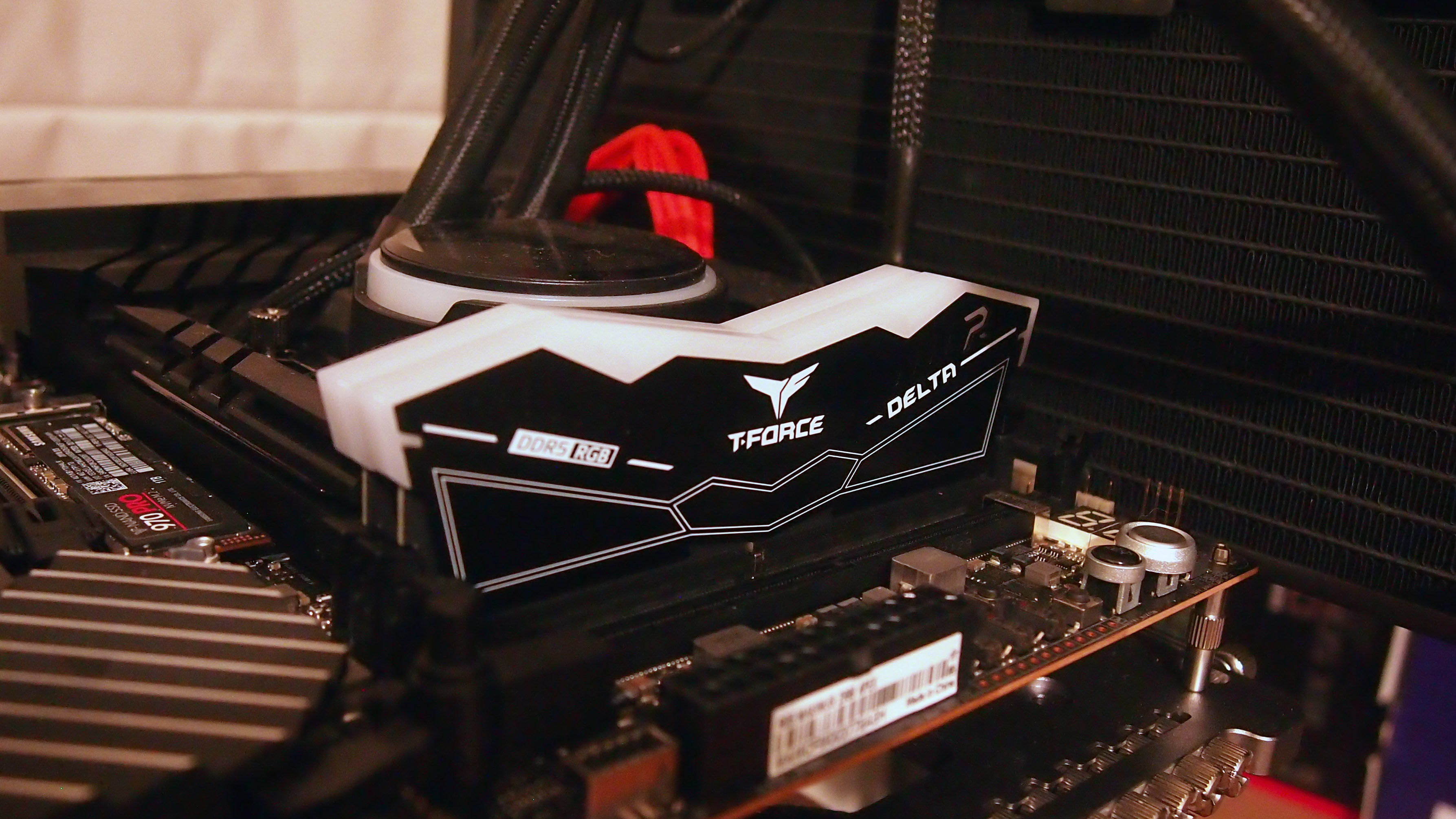
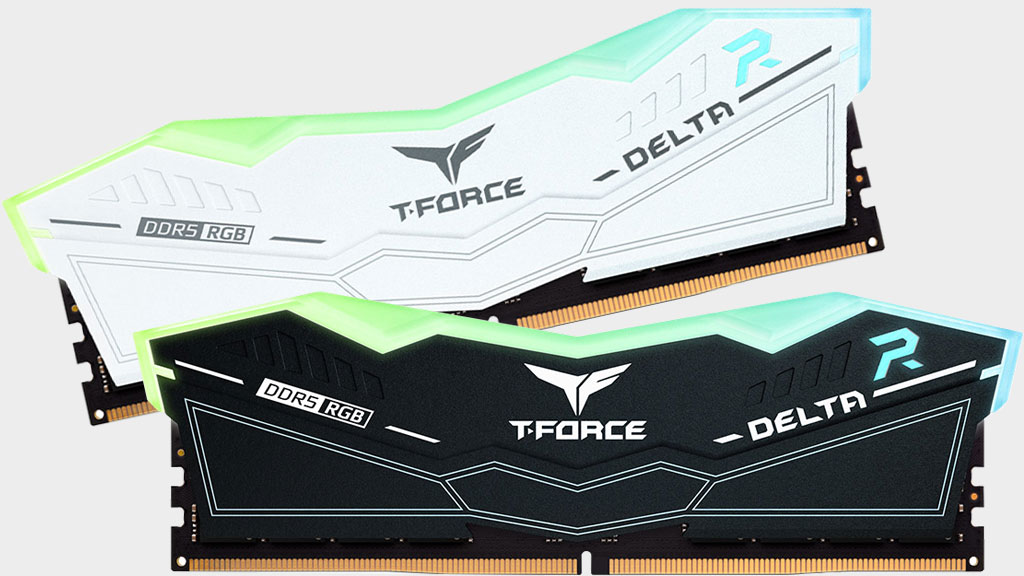
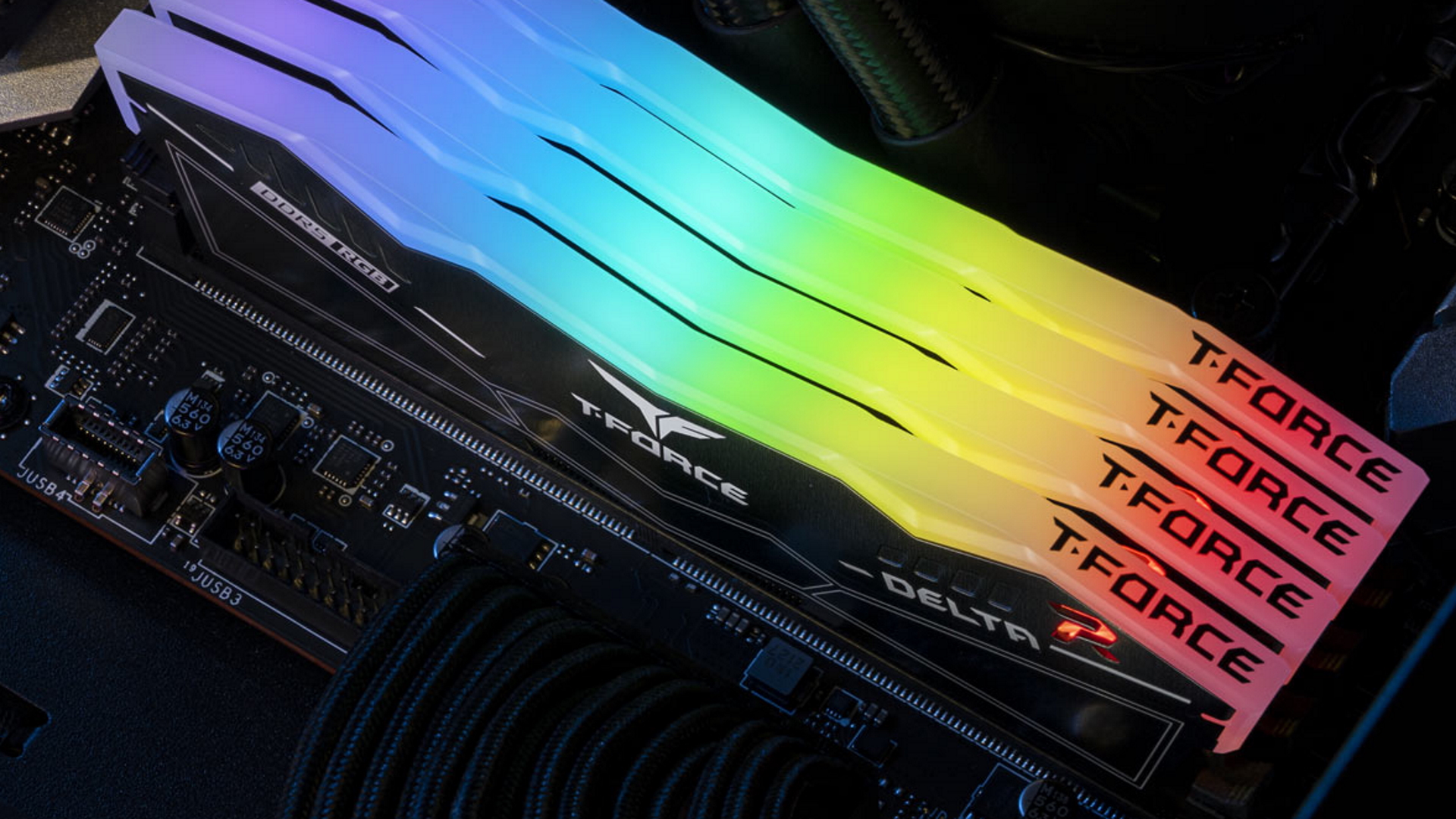
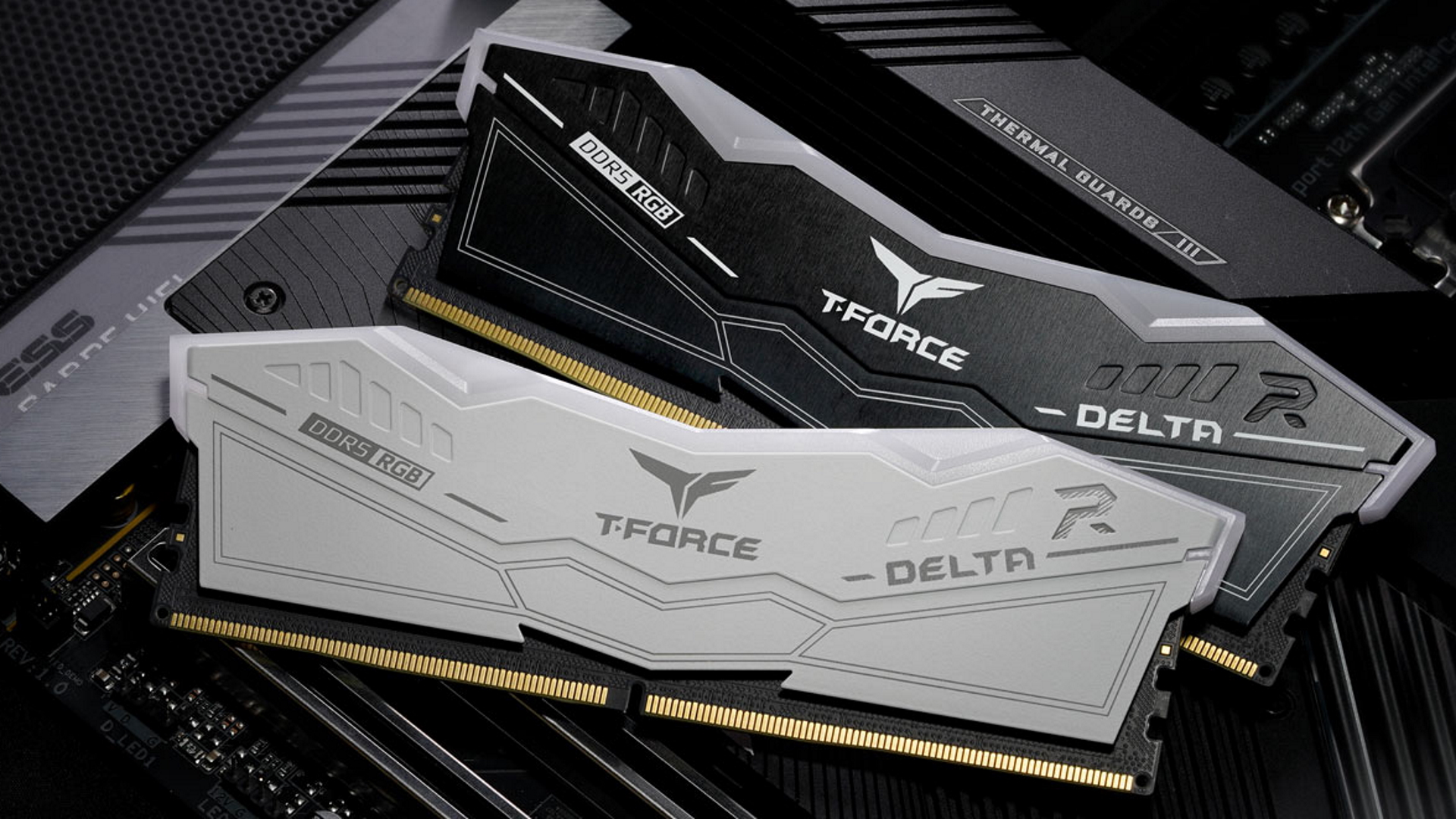
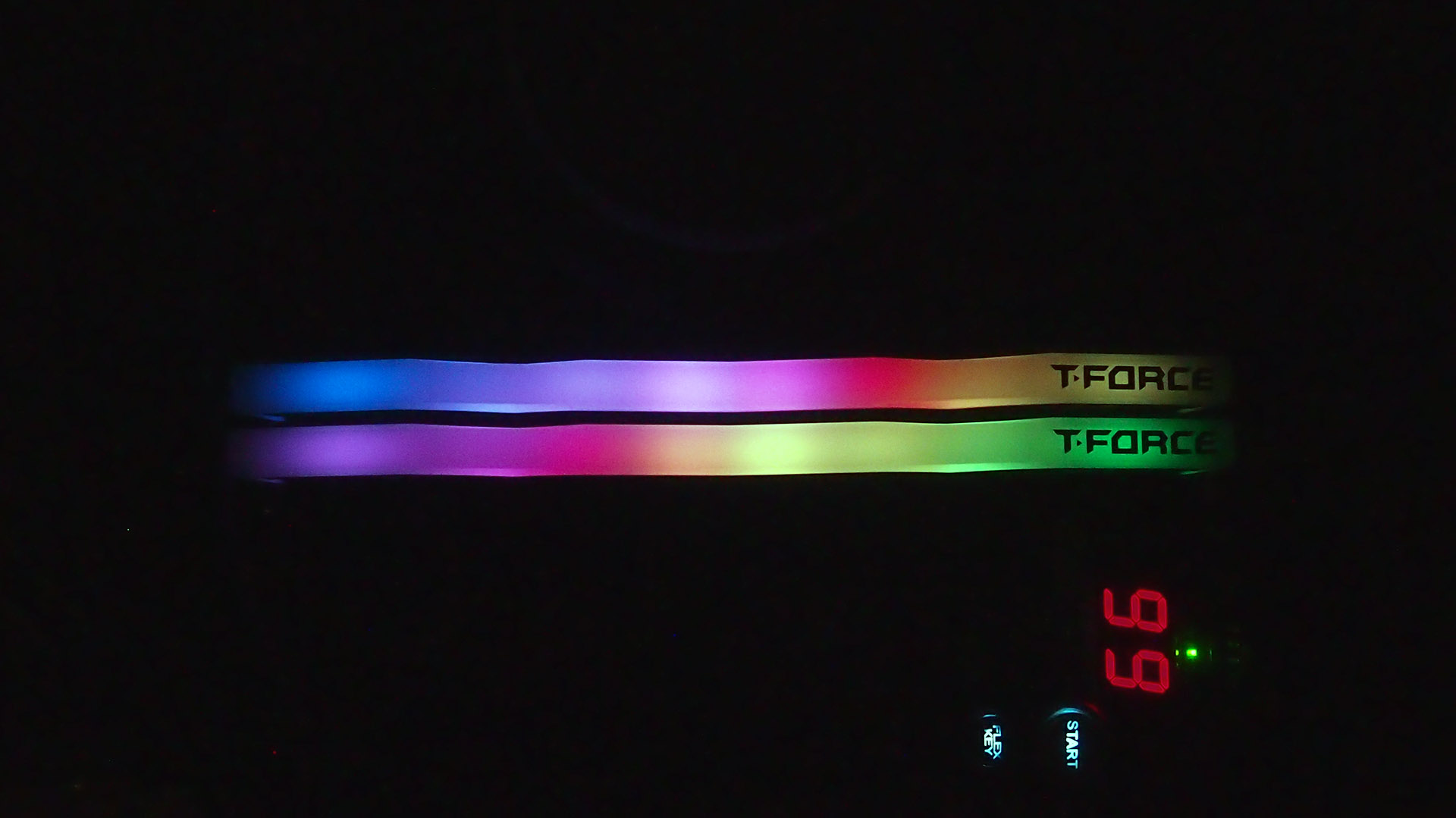
The Teamgroup Delta RGB DDR5-6400 kit is one of the fastest memory kits on the market. it’s the kind of kit that is overkill for most users, but if you’re fortunate to be rocking a high end overclocked system, then you owe it to yourself to grab a set of high speed RAM to get the most out of it.
The Team kit we tested featured SK Hynix ICs and it had some surprising overclocking headroom. If you’re a bit adventurous with your voltages, this is a kit that can push towards 7000MHz! We were able to hit DDR5-6667 with 36-38-38 timings.
The kit is available in either black or white. Its diffused RGB lighting looks great and were pleased to say that its price is well under what it was originally listed for. It’s still a pricey proposition and definitely not for everyone but if you’re one of those who is considering something like an RTX 3090 Ti, then a kit like the Team Delta RGB DDR5-6400 is a no brainer.
Read our Teamgroup T-Force Delta RGB DDR5-6400 C40 review
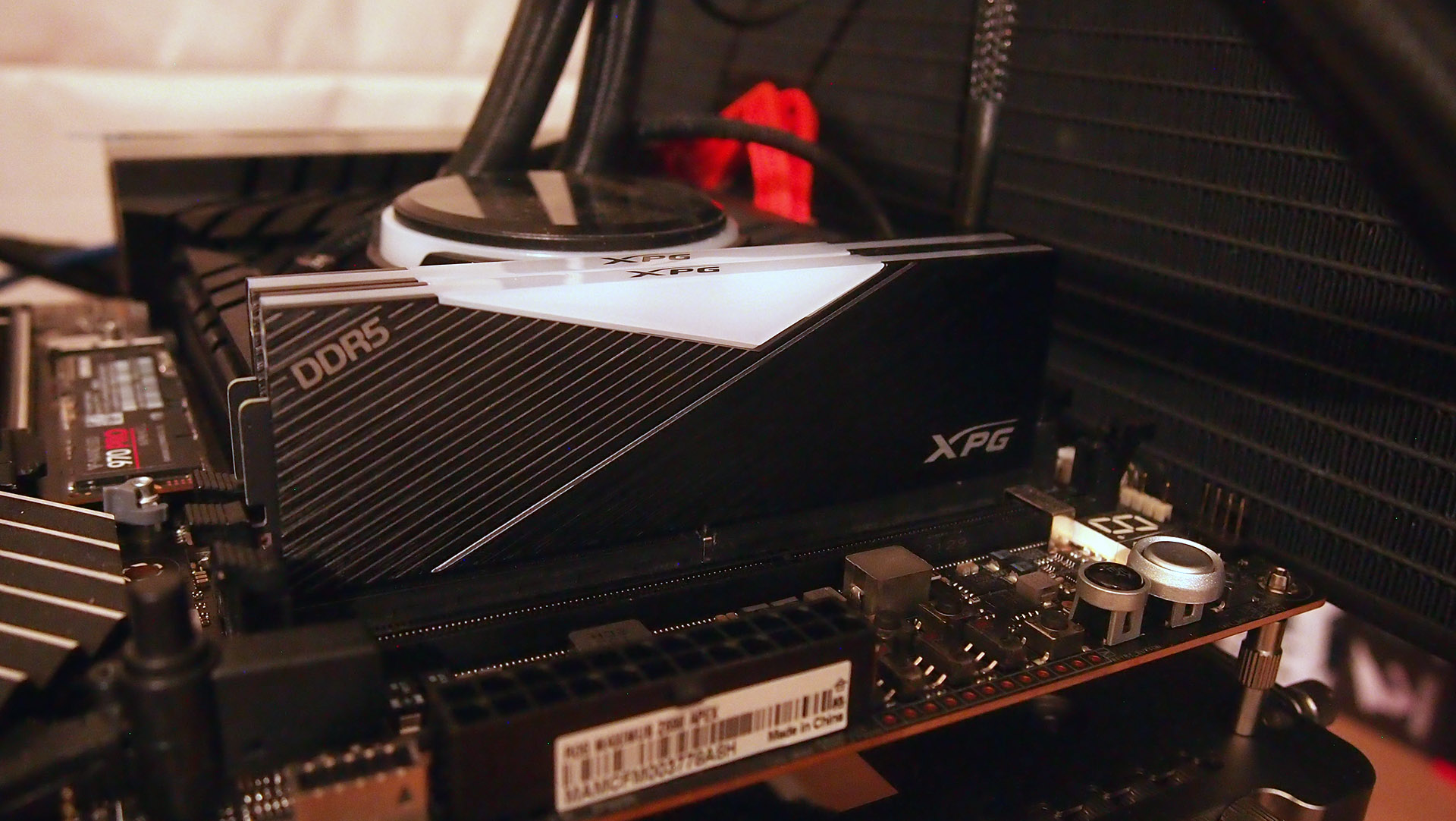
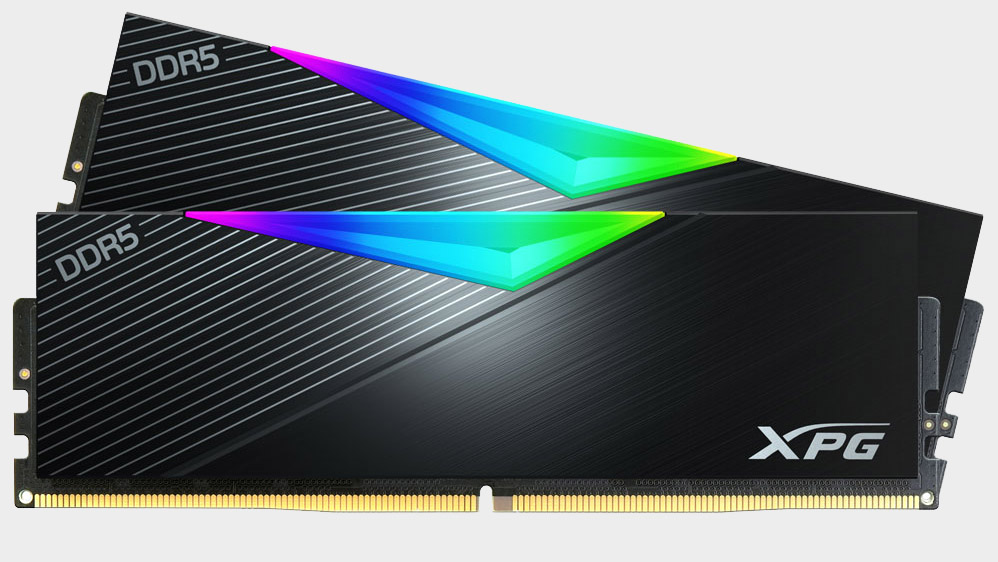
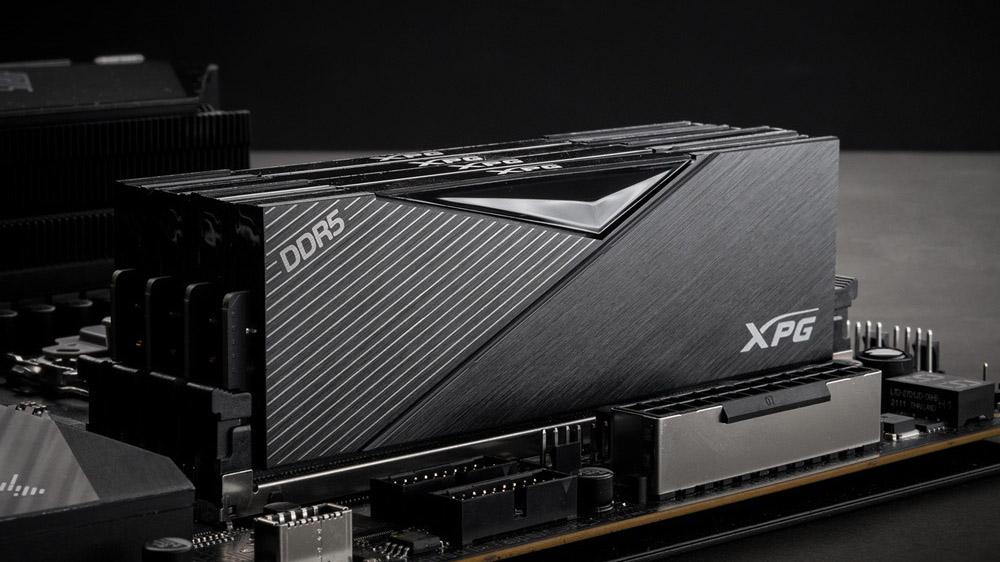
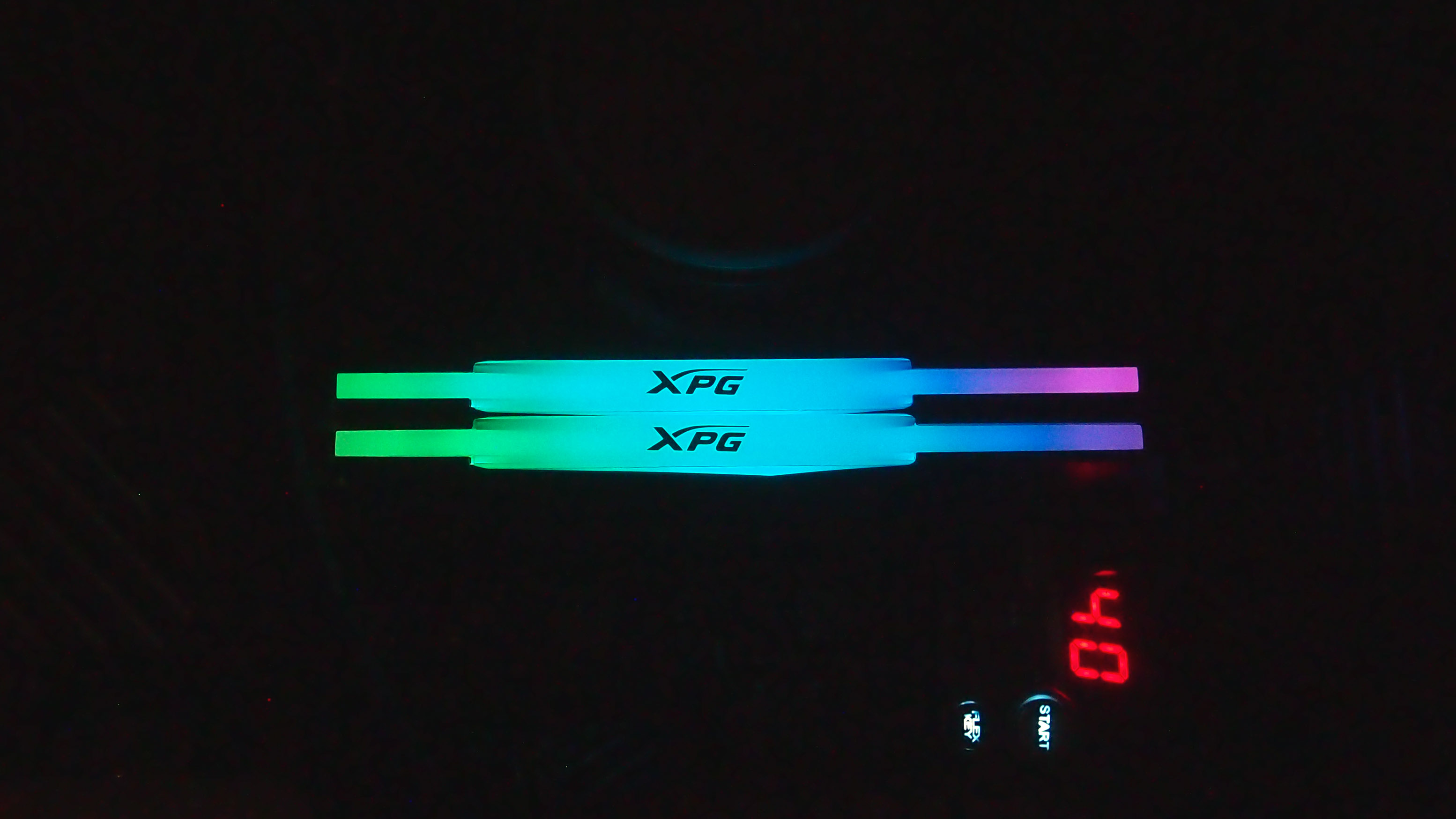
Adata might not have the brand name recognition of a Corsair or G.Skill, but the company has been flying under the radar for several years. It offers some very good memory kits, usually at attractive prices. The XPG Lancer DDR5-6000 RGB kit is a perfect example. At 6000MHz, its a fast kit, and at the time of writing, it’s typically cheaper than competing 6000MHz kits and hardly any more than a good 5200MHz kit.
The kit features tall heat spreaders with attractive RGB lighting that covers the length of the module. It’s somewhat subtle – if that’s possible with RGB – compared to some kits that feature overly bright rave laser style LEDs. Under the hood, our kit came with SK Hynix IC’s which are the favoured IC for high speed kits right now. That means it should have overclocking headroom.
We were able to run the kit at 6400MHz and drop the CAS latency to 32, albeit with some additional voltage. That elevates its performance to levels that compete against the very best DDR5 kits. It’s an easy recommendation for someone looking for a good value kit that’s fast, has some OC headroom and looks great.
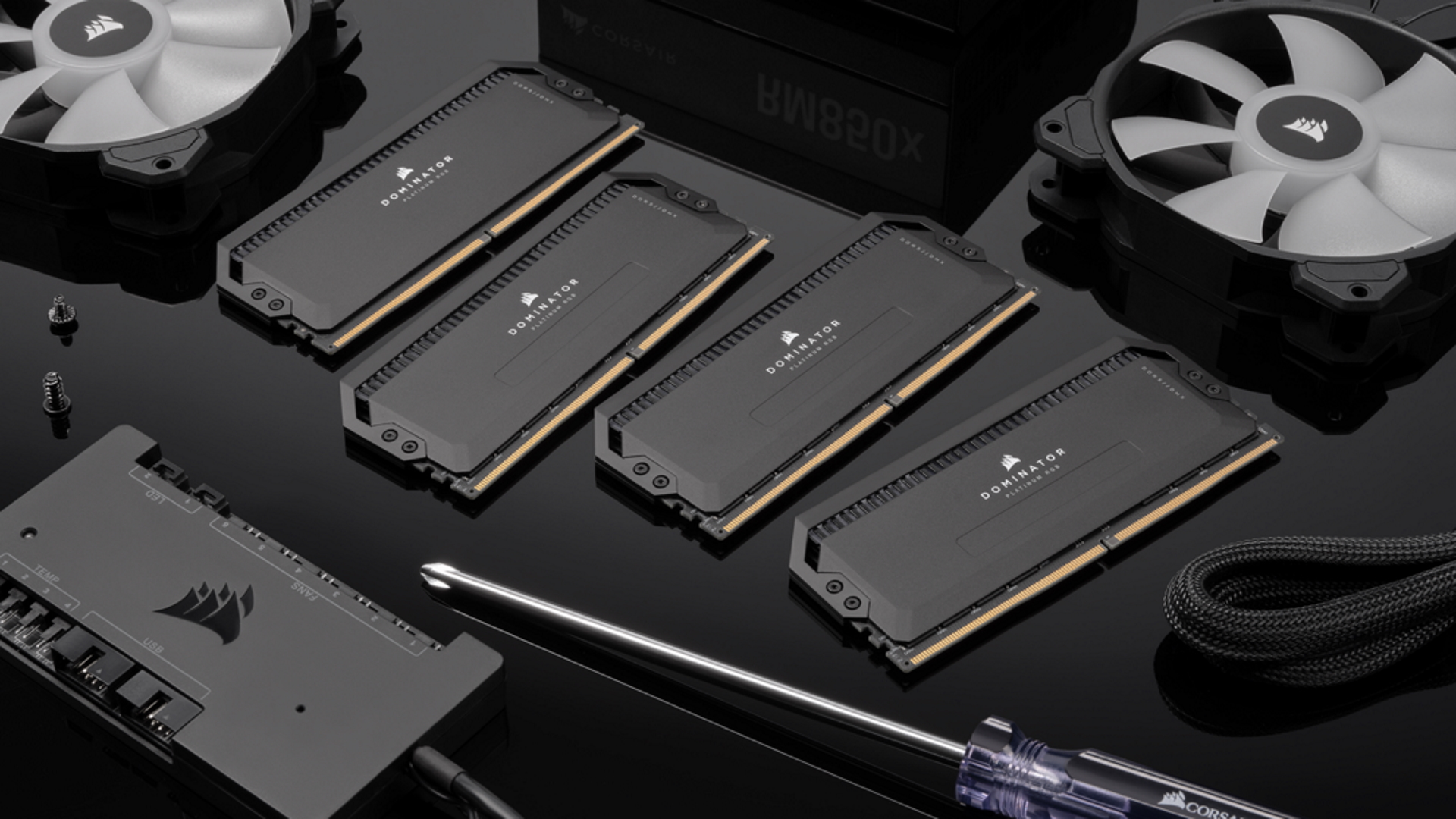
DDR5 gaming RAM FAQ
Does DDR5 RAM make a difference for gaming?
The answer depends on what speeds and latencies we’re talking about. Games tend to be sensitive to latency, where lower is better. This means a good low latency DDR4 kit is still a perfectly viable gaming option. However, the real world performance differences are small, and non-existent in GPU limited scenarios which is usually the case unless you’re chasing very high frames per second.
If you have a good DDR4 kit, lets say a 2x16GB DDR4-3200 C14 kit or better, there’s little reason to spend the money to upgrade to DDR5 for gaming.
The higher bandwidth of DDR5 is beneficial in other areas though, particularly in creative type applications. DDR5 uses less power, 32GB is generally the baseline and a DDR5 system is better for future proofing. As time goes on, we can expect faster and lower latency kits.
Will DDR5 work on a DDR4 motherboard?
No, it won’t. Even though both types have 288 pins, DDR4 and DDR5 memory is electrically incompatible. The two types have a different notch position, to prevent anyone from inserting a DDR5 module into a DDR4 motherboard, or vice versa.
How much RAM do I need?
We recommend a minimum of 16GB for most serious gaming PCs (it’s what we use in our high-end PC build), but as 32GB DDR5 kits are so widely available, 32GB has become the new baseline for a DDR5 system. With 32GB you’ll have more than enough for for pretty much every task you can throw at your system. You’ll easily be able to enjoy gaming, multitasking, creative or intensive apps and frequent alt-tabbing. And you’ll be all set for a few years to come, too.
How fast should RAM be for a gaming PC?
Firstly, you should use a dual channel kit wherever possible. That goes for both DDR4 and DDR5 systems. That will ensure you’re getting the most out of the best CPUs for gaming. For an Intel DDR5 system, a good kit around the 5200MHz range will be fine, while for a high end system you’ll want something a little faster at 6000MHz or even 6400MHz if you really want to get every last drop of performance.
Do I need RGB LEDs on my memory DIMMs?
No. Absolutely not. But RGB can make your machine look that little bit cooler, and we all know PCs need to run cool.
Jargon buster – RAM terminology
DIMMs – Dual In-Line Memory Module, the physical circuit board that holds the RAM chips that plugs into the slots on your motherboard.
ECC Memory – Error-correcting Code Memory, RAM capable of automatically detecting and correcting errors on the fly, generally used in highly sensitive applications, like scientific data collection or banking. Typically only used and supported on servers and workstations, most desktop boards can run it as non-ECC.
Frequency – The effective speed at which the memory operates, measured in MHz.
CL/CAS Latency – Column Access Strobe Latency, the delay between the memory controller requesting data from the RAM and the available data; the first number listed in a kit’s timings.
SO-DIMM – More compact DIMM slots typically deployed in laptops, although these can turn up on tiny machines as well.
Timings – The measure in several memory clock cycles an operation requested by the memory controller will take for the RAM to complete. Lower is generally better.
XMP – eXtreme Memory Profile, instructions for the BIOS that tell it what frequency, timings, and voltage to access RAM at, a shortcut for overclocking without tinkering with each setting individually. Officially for Intel platforms, many AMD boards readily support reading XMP data (though it may go by another name like A-XMP or DOHC).

